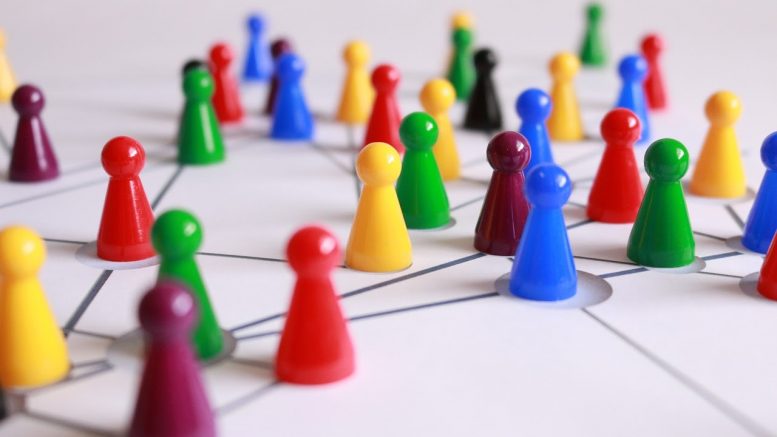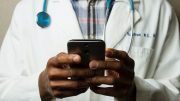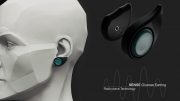Handwritten prescriptions and handmade cough medicines are a thing of the past. In their place, 21st-century technology is revolutionizing and improving health care. Find out how how tech is making health care better in 2021:
Device-based reading
One of the most significant ways that healthcare is being improved in 2021 by tech is devices-based readings. Of courts, for the most part, the devices in question here are smartphones, and connected accessories such as smartwatches or fitness wearables. Indeed, such devices provide an unprecedented glimpse into the health of an individual as they can track things like heart rate, amount of exercise.
There are even accessories that you can buy that will allow you to check and log your blood sugar levels too which provides two important advantages. The first is the insight itself, whereas the second is these devices and their associated software able to record and track this information, something that can provide valuable insights both for medical professionals and the patients too.
Additionally, some devices go beyond merely monitoring information by administering medications as well. In fact, right now there is a device that monitors those with type 1 diabetes and can administer the correct medication automatically.
Improved access to treatments
Another significant way in which medical tech is improving the health field is by enhancing service users’ access to treatment. Indeed, there are two main ways in which this is happening.
Tele mental health
The first is via services known broadly as tele-mental health. These are platforms that offer mental health treatments such as counselling and therapy via video and text chat.
The major advantage of such services is that they make seeking support much easier and more convenient as well. In fact, when using tele-mental health services the service user is free to pick a time that works for them, and can even have an almost instantaneous chat when needed, something that means their therapist can provide support in situations that the user is currently experiencing at that moment, rather than waiting until after the event has passed. Indeed, some would argue that this is a much more adaptive way of offering support, especially behavioral support as it allows changes to be made in real-time, and installs a sense of confidence in the user in what they are engaged in doing.
Additionally, many people find it easier to communicate to their therapist via text rather than having to sit face to face. Some conditions such as OCD may even make it very difficult for a service user to leave their home, and so make traditional face-to-face therapy tough to access, something that suggests this approach would be a much better fit.
Online pharmacy with delivery
The second way that tech is improving access to health treatment is with the advent of online pharmacies. This is because online pharmacies can fulfill several treatment roles at once. The first of these is fulfilling a prescription and having it delivered directly to a user’s home.
Indeed, it has never been so quick and easy to get an NHS prescription delivery, which is good news for the housebound, for those with busy lives, and even those that have a tendency to reorder their perception each month. Not to mention that having your meds delivered to your home is a far safer option in the middle of a pandemic.
The thing is that the online pharmacies also provide additional services such as online doctors that can prescribe some of the more common medications like contraception and malaria tablets, something that means users can avoid having to visit the doctors altogether.
Remote health exams
Following on from technologies’ ability to improve access to treatment, it is also making diagnosis and access to medical professionals for patients easier. Primarily this is happening via remote health exams, something that can be conducted via live or recorded video or in some cases by submitting a picture via an app.
For example, a mother with a child presenting with a rash may use a video doctor service. Whereas an adult concerned about the shape of a mole might submit a picture for analysis via an app. In the particular video, calls have the potential to offer immediate emergency advice and treatment, and so could save valuable time in a critical situation. advice apps lack this immediacy although do provide a much more efficient way of getting less critical issues resolved, something that could help those that wouldn’t usually bother the dr with their problems to get the help they need.
Of course, as the health tech becomes more advanced we can expect other developments in this area too, such as a chair that can measure the vitals of a patient and then automatically send this data to the medical professional associated with their case.
Communication and information
Last, of all, the role that technology is currently playing in improved communication and the dissemination of information in the medical field must not be underestimated.
Now, due to the internet, social media, and even specific apps, it’s as easy for medical professionals to connect with each other and share expertise as it is for a regular person to text a loved one, something that has the potential to make both diagnosis and treatment a lot easier and more effective.
However, it’s not only communication between medical professionals that technology has revolutionized. Indeed, the democratization of information has also made it possible for patients to educate and act as better advocates for themselves as well. (Although caution must always be practiced here because professional expertise is often required to understand the context symptoms and make a correct diagnosis.)
Indeed, this is something that has triggered a distinct shift in the way many doctors and other medical professionals approach treatment and diagnosis. That is they are now seeing it more as a partnership with their patients where the service user retains agency and control, something that can only work for the good of the healthcare profession in the long term.
Final thoughts
Technology is helping to improve the health care industry in several ways from improving access to treatment and diagnosis to leveling the playing field between service users and their physicians.





